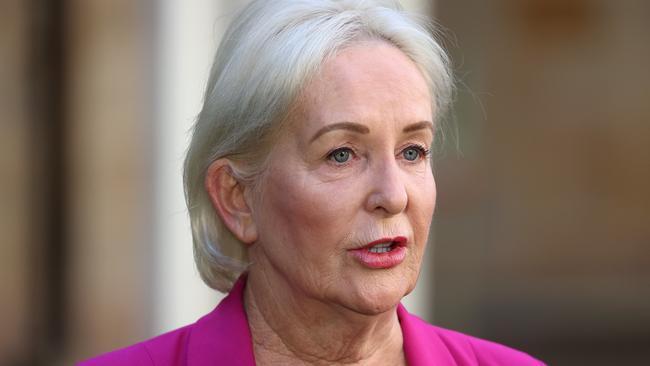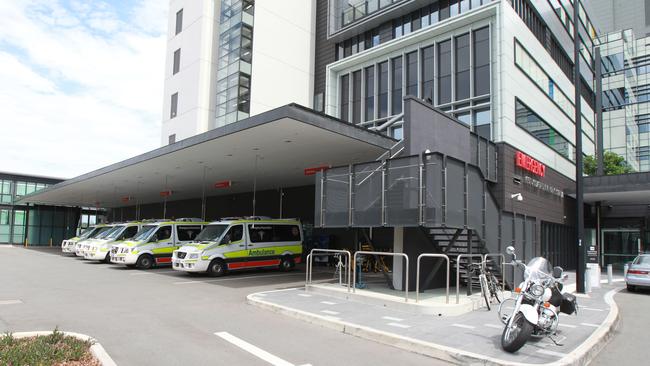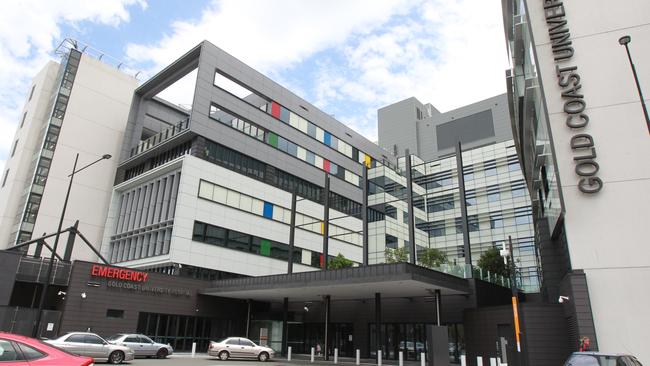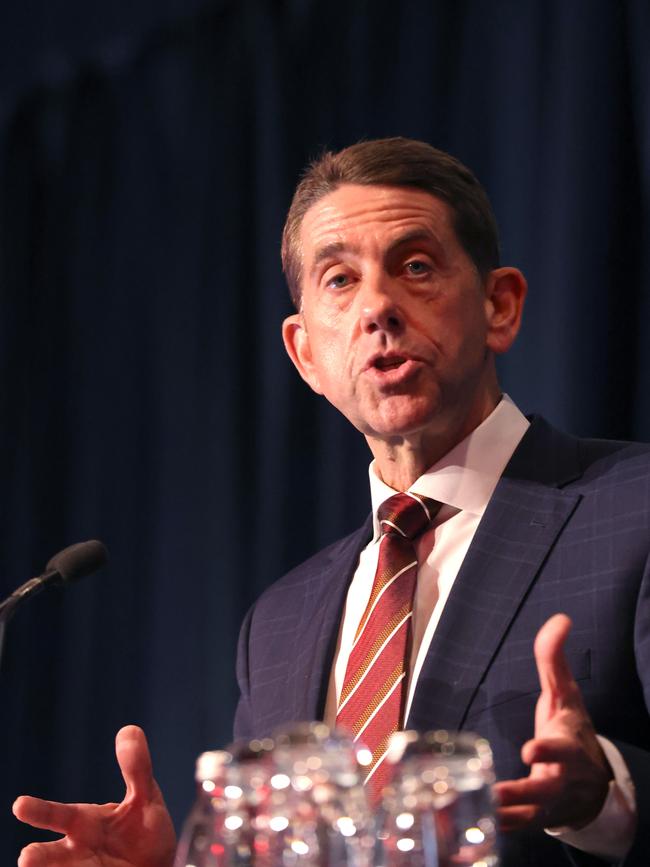Gold Coast residents told not to visit city emergency departments after record health spend
City hospitals have been forced to issue renewed pleas to residents to stay away from overflowing EDs unless they’re facing a genuine emergency, with officials labelling it “frightening” for patients.
Gold Coast
Don't miss out on the headlines from Gold Coast. Followed categories will be added to My News.
- ‘Nowhere to go’: No extra funds for Coast’s housing crisis
- Mystery surrounds hospital in city’s north
GOLD Coast hospitals have been forced to issue renewed pleas to residents to stay away from overflowing city EDs unless they’re facing a genuine emergency.
Gold Coast Health first urged locals and visitors with mild symptoms mid-last week to stay away from EDs facing “high demand”.
Gold Coast University Hospital and Robina Hospital posted to social media again over the weekend reissuing the warning.
““Our amazing staff are working hard to care for patients – especially those who are critically or seriously injured,” the posts read.

“Please keep the ED only for emergencies.”
Shadow Health Minister and Mudgeeraba MP Ros Bates said the repeated posts were concerning.
“It’s pretty frightening for the public if they’re being told not to come to their own public hospitals.
“What that means is if you are sitting there with chest pain that you think might be indigestion, but you know the hospital’s busy, you would think twice about calling an ambulance.
“I can tell you, as a nurse in the ED there were a lot of people who died from ‘indigestion’ who didn’t realise it was chest pain.
“It’s really frightening that this could be happening right now in a city as big as ours.”
A Bulletin investigation last week revealed there would be no relief for strained city hospitals in the short term, with less than 100 new hospital beds to come online by the end of 2024.
The State Budget showed the government will supply 600 new beds to the Coast, but 404 of them won’t exist until the Coomera Hospital is completed in 2028.
Seventy extra beds at GCUH and just 20 beds at Robina Hospital will come online by the end of 2024, budget documents show.

A further 114 beds promised for Robina Hospital are subject to lease agreements.
Gold Coast Health has said they are unable to say exactly how many beds are available at any given time in the emergency department, with staff saying it changes “minute by minute”.
Last week health officials revealed GCUH was on Tier 2a of its five-tier demand ranking system, meaning “major demand where a whole-of-hospital response is required to address patient flow and bed capacity”.
Sources have told the Bulletin the emergency department would often switch to Tier 2b: “Major demand with more than 20 patients in the emergency department awaiting a ward allocation.”
Exclusive: Years before Coast gets new hospital beds
LESS than 100 new hospital beds will become available in the next two years despite the city’s health system in crisis, it can be revealed.
It follows Gold Coast Health on Wednesday night telling residents and visitors with mild symptoms to stay away from overflowing EDs.
Tuesday’s State Budget showed the government will supply 600 new beds to the Coast, but 404 of them won’t exist until the Coomera Hospital is completed in 2028.
Seventy extra beds at Gold Coast University Hospital and just 20 beds at Robina Hospital will come online by the end of 2024, budget documents show.
A further 114 beds promised for Robina Hospital are subject to lease agreements.
Shadow Health Minister and Mudgeeraba MP Ros Bates said the announcement was disingenuous.
“It’s a political solution, not a real solution,” she said.
“And what are you doing to find staff? Because they’re leaving in droves.”
Most residents continue to back the hard-working staff after being warned that emergency departments at the city’s two public hospitals were experiencing high demand.
A concerned parent wrote: “We waited over six hours with my daughter who had two broken wrists. Her OBS (medical observations) were not even taken in that time. The next day we paid for a private hospital to plaster her.
“I did class her injuries as an emergency, but clearly not the case. I feel sorry for the system and all the people not getting the care they deserve.”
Many patients also complained they could not see a GP if they had the mildest of respiratory systems.

“Our amazing staff are working hard to care for patients – especially those who are critically or seriously injured,” Gold Coast Health posted.
“Please keep the ED only for emergencies.”
Patients not seriously ill were advised to contact a GP, and links were provided for availability of local doctors.
GCUH ED director Dr David Green blamed Covid-19 and rising influenza cases for the strain on city hospitals.
Asked how many beds were available at GCUH and Robina, he said: “We meet twice a day with (Robina Hospital staff) to look at the loads at Robina and here, to look at the available bed numbers in the ED, to look at the ambulance load and work out the split.
“(The number of beds) varies from day to day. Obviously, you get stressed for beds.
“At the moment medical beds are the priority. The length of stay for patients is quite prolonged as well.
“The load-share agreement (with private hospitals) is still going.
“(Their bed numbers) also vary from day to day. They’re under similar stresses that we’re under.”
A GCUH health source told the Bulletin: “It’s just business as usual. There’s 400-odd calls a day. Covid puts a complexity on it.
“There are no beds there for acute patients. You have ramping. You can’t get into the ED. You are then stuck in the ED for days because there are not enough beds in the wards.”
The Bulletin asked Gold Coast Health the following questions on Thursday morning:
* Can you please outline the current situation at the ED regarding beds? What is your bed status – how many patients to place, how many beds available?

* Is it at the point of a Code Yellow/Code 6.3? If not, are there concerns it will reach that point?
Code Yellows or Code 6.3s were previously declared when a hospital had either an infrastructure or other internal emergency, which will affect its service delivery, including bed shortages.
A Gold Coast Health staff member said the number of beds available changed “minute by minute”.
Gold Coast Health also confirmed they had switched to a statewide “five-tier” system to determine the current status of available beds and patient numbers.
Health officials said they are on Tier 2a, meaning “major demand where a whole-of-hospital response is required to address patient flow and bed capacity”.
However, it is understood the emergency department would often switch to Tier 2b: “Major demand with more than 20 patients in the emergency department awaiting a ward allocation.”


